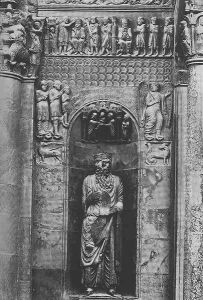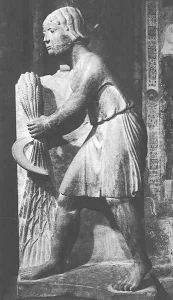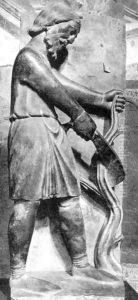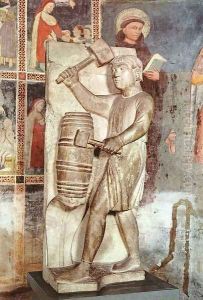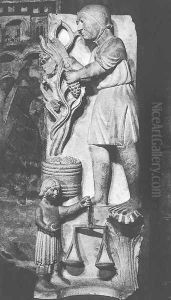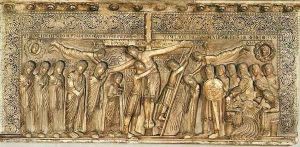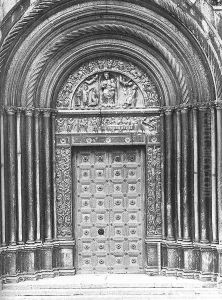Benedetto Antelami Paintings
Benedetto Antelami was an Italian sculptor and architect who is considered one of the most important artists of the Romanesque period in Northern Italy. His exact birth and death dates are not known, but he is thought to have been born around 1150 and to have died around 1230.
Antelami's work is characterized by its detailed narrative relief sculptures and a style that heralded the transition from Romanesque to Gothic art. He was a master of both marble and wood carving, and his works often featured complex iconography and symbolism, which has been the subject of much scholarly interpretation.
The artist's life and career are best documented through his surviving works. The most famous of these is the Baptistry of Parma, where his relief sculptures depict scenes from the Old and New Testaments, crafted with a realism and emotional depth that were innovative at the time. The Baptistry's decorations were started around 1196, and Antelami's contributions to this site continued until about 1216.
Another significant work attributed to Benedetto Antelami is the Deposition from the Cross in the Cathedral of Parma, which is considered a masterpiece of Romanesque sculpture. It reveals Antelami's profound ability to convey human emotion and to blend classical influences with the emerging Gothic style.
Not much is known about Antelami's training or personal life. It is believed that he may have been influenced by the work of Wiligelmo, another Romanesque sculptor, and that he could have been exposed to other artistic traditions through travel. Throughout his career, he worked for various patrons, which was typical for artists of the time.
Benedetto Antelami's influence extended beyond his lifetime, as his style and techniques were adopted by other sculptors and spread across Italy. His works remain a significant source for understanding the artistic transition between the Romanesque and Gothic periods and offer valuable insights into the religious and cultural context of his era.
